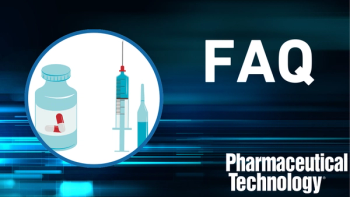
- Trends in Formulation October 2025 eBook
- Volume 49
- Pages: 20–28
Enhancing Patient-Centric Care Through Oral Liquid Drug Delivery Formulations
Key Takeaways
- Patient-centric drug development improves adherence and outcomes by focusing on patient needs and preferences, with regulatory support from bodies like the FDA.
- Special populations, including pediatric, geriatric, and dysphagic patients, require patient-friendly drug delivery formats to address unique medication intake challenges.
The growing demand for liquid medicines is increasingly driven by the unique needs of several distinct patient groups, improving compliance in these demographics through flexible, palatable dosing options.
Patient-centric drug development is essential to improve patient outcomes, experience, and engagement. By focusing on patients’ needs, experiences, and preferences, drug developers can create treatments that are optimally effective and tolerated. This leads to improved adherence to treatment regimens and better overall health outcomes when compared with not taking these factors into consideration (1). Regulatory bodies like FDA emphasize the importance of patient-focused drug development. They provide guidance on incorporating patient input into drug development and evaluation, which can facilitate smooth regulatory approval processes (2). Ensuring that patients’ needs and preferences are central to drug development acknowledges them as key stakeholders in their own healthcare. It respects their autonomy and dignity. Patient-centric approaches encourage understanding the patient population or sub-groups (through various forms of research) and using the information to inform drug development.
Certain populations, such as pediatric, geriatric, and dysphagic patients and those with chronic conditions, can struggle with taking medicine. Children often have difficulty swallowing tablets and may be sensitive to the taste of medications. Older adults often face such challenges as dysphagia (difficulty swallowing), polypharmacy (taking multiple medications), and cognitive impairments. Patients with dysphagia require medications that are easy to swallow or do not require swallowing at all. Patients with chronic conditions may often require long-term medication and benefit from fixed-dose combinations and extended-release formulations, which can improve adherence (3). These populations demonstrate the breadth of challenges facing drug product formulators, such as swallowing difficulty, poor palatability, dosing accuracy, and complicated or overwhelming medication regimes, all of which can result in poor compliance. Thus, it is important to consider patient-friendly drug delivery formats for these populations.
Patient-centric oral drug design focuses on creating medications that are easier and more pleasant for patients to take, thereby improving compliance and overall treatment outcomes. Approaches that can appeal to individuals that have difficulty swallowing include chewable tablets, fast-dissolving films or tablets, liquids, and particulate or granule sachets. Chewable tablets are designed to be chewed and swallowed, making them easier for children and adults who have difficulty swallowing tablets whole. They often come in pleasant flavors to enhance the experience. Fast-dissolving films and tablets dissolve quickly in the mouth without the need for water. They are convenient for patients who have trouble swallowing or need medication on the go. Sachets contain powdered, granulated, or particulate medication that can be mixed with water or food, offering convenient drug administration. Liquid formulations are ideal for patients who cannot swallow tablets or prefer a liquid form. They allow for flexible dosing and can be flavored to mask the taste of the medication.
Oral liquid market trends
The pharmaceutical liquid suspensions market is experiencing significant growth, driven by a compound annual growth rate of 6.5%, with projections to reach $5.2 billion by 2033 (4). This growth is driven by the increasing demand for patient-focused formulations for such populations as older adults. Approximately 27–29% of older patients report difficulties with swallowing, which can significantly impact their ability to take medications and lead to issues like aspiration pneumonia, malnutrition, and weight loss (5,6). Liquid suspensions offer ease of administration and flexible dosing, making them a preferred choice for older adults.
Technological advancements have played a crucial role in enhancing the stability, bioavailability, and palatability of liquid suspensions. Such innovations as nanotechnology and taste masking techniques have improved the overall patient experience (4,7). Additionally, the development of extended release formulations has reduced dosing frequency, further improving patient compliance (4). Liquid suspensions can enhance patient compliance due to easier administration and better palatability—particularly important for patients with chronic conditions requiring long-term medication (8).
For patients with dysphagia, or difficulty swallowing, thickened liquid suspensions provide a safer alternative to thin liquids, which can pose a risk of aspiration (4,7). Thickened liquids flow more slowly, allowing for better control during swallowing and reducing the risk of choking (4,7). This makes liquid suspensions a viable option for delivering medications to patients with dysphagia, ensuring treatment without compromising safety (7). While 42.4% of patients generally prefer tablet dosage forms, liquid suspensions are favored by those with swallowing difficulties, allowing for precise and flexible dosing that can improve adherence (1,9).
Oral liquid delivery systems
Three main types of oral liquid drug delivery systems exist: solutions, suspensions, and emulsions. Solutions are homogeneous mixtures in which the drug is completely dissolved in a solvent, which ensures uniform drug distribution, leading to consistent dosing and rapid absorption. Suspensions consist of finely divided drug particles dispersed in a liquid medium, useful for drugs that are insoluble in water. Proper formulation ensures that the particles remain evenly distributed and do not settle quickly. Emulsions are defined as mixtures of two immiscible liquids, typically oil and water. They are stabilized by emulsifying agents and can enhance the bioavailability of drugs that are poorly soluble in water.
Effective oral liquid drug products must have good stability, palatability, and preservation. Ensuring the physical and chemical stability of the formulation is critical. Such factors as pH, temperature, and light exposure can affect the stability of liquid formulations. Proper formulation and packaging can help to maintain stability. Techniques to improve palatability are essential, especially for pediatric and geriatric patients. Flavoring agents, sweeteners, and taste-masking technologies can be used to enhance the taste of liquid medications. Preventing microbial growth is crucial for the safety of liquid formulations; thus, the addition of preservatives ensures that the product inhibits microbial contamination throughout its shelf life.
Excipient selection in oral liquid dosage forms
Choosing appropriate excipients is a vital step for solubility, stability, and taste. Excipients, such as solvents, suspension aids, stabilizers, and flavoring agents, play a significant role in the overall effectiveness and acceptability of the formulation. Their selection is not merely supportive but central to the success of patient-centric drug design, especially in pediatric and geriatric patients and those with swallowing difficulties.
- Solvents (e.g., purified water, glycerin, propylene glycol) are essential for dissolving the API in solution-based formulations. They influence the bioavailability and absorption rate of the drug (10). For poorly water-soluble drugs, co-solvents or solubilizers like polyethylene glycol may be used to enhance solubility (11).
- Suspension aids, such as xanthan gum and colloidal microcrystalline cellulose—which is a co-processed excipient comprising microcrystalline cellulose (MCC) and sodium carboxymethyl cellulose (NaCMC)—help maintain uniform distribution of insoluble particles in suspensions. These agents prevent sedimentation and also ensure dose uniformity, which is critical for accurate dosing (10). The inclusion of the right amount of suspension aid can be a delicate balancing act between good suspension properties without being overly viscous. One case study involving an oral reconstitutable azithromycin suspension showed that inadequate amount of suspension aid (xanthan gum) led to inhomogeneity (phase separation), while inclusion of too much suspension aid rapidly increased the suspension viscosity (12).
- Stabilizers (e.g., antioxidants like sodium metabisulfite, chelating agents like ethylenediaminetetraacetic acid, preservatives like sorbic acid, and surfactants like polysorbates) protect the formulation from degradation due to oxidation, hydrolysis, or microbial contamination. Without stabilizers, the shelf life and efficacy of the product can be significantly compromised (10). These also need to be included in sufficient quantities to be effective. When sodium benzoate was included at less than 0.05% w/w in a topical formulation, the samples did not pass the United States Pharmacopeia antimicrobial efficacy test (13).
- Flavoring agents and sweeteners (e.g., sucrose, sorbitol, artificial flavors) are crucial for masking unpleasant tastes, especially in pediatric formulations. Palatability, especially poor palatability, directly affects adherence to treatment regimens. Inadequate taste masking can lead to poor compliance and therapeutic failure (10,14).
If key excipients are omitted or improperly selected, consequences can occur. For example, the API may precipitate, leading to inconsistent dosing. The formulation may degrade faster, reducing efficacy (and possibly unintended side effects). Microbial growth may occur in liquids without preservatives. Omitting taste modifiers could result in non-compliance. Ultimately, excipients are not just inert ingredients—they are functional components that ensure the drug product is safe, effective, and acceptable to the patient (10).
Suspension aids
Rheological performances of suspension aids or agents, such as gel-like structure, thixotropic property, viscosity profile, and stability, are crucial to the successful development of a suspension formulation. Colloidal MCC is a great example of a suspension aid with ideal rheological performance. When activated in water, colloidal MCC forms a thixotropic gel-like structure that can be stable for months. The thixotropic behavior means it can flow easily under shear stresses, like pouring out of a bottle, and slowly regains its structure or viscosity upon removal of the stress (i.e., storage). The colloidal MCC can be used for both pre-made liquid suspensions (like Avicel RC-591) or reconstitutable suspensions (like Avicel CL-611).
Other common excipients used as suspending aids are xanthan gum and NaCMC. Xanthan gum is a high molecular weight polysaccharide produced by the fermentation of glucose or sucrose by various strains of the bacterium Xanthomonas campestris. Its ability to make highly viscous solutions at low concentrations makes it amenable to suspensions. NaCMC is an anionic polysaccharide produced by chemically modifying cellulose to make it soluble in water. The functional properties of NaCMC are able to be modulated by changing the substitution on the cellulose backbone and the molecular weight. Both xanthan gum and NaCMC can be used to increase the viscosity of a solution, thus helping to keep insoluble particles suspended.
The following case studies highlight colloidal MCC, xanthan gum, and NaCMC when used as suspension aids. Colloidal MCC often demonstrates better suspension performance than xanthan gum and NaCMC, including shelf stability (case study 1). However, such conditions as low pH and high salt content are shown to stress colloidal MCC suspensions, leading to flocculation. Combinations of suspending aids are able to overcome some of these challenges, as highlighted in case studies 2 and 3.
Suspension case study 1: impact of suspension aid selection
In case study 1, the suspension capability of colloidal MCC, in both pre-made liquid and reconstitutable suspensions, was compared with that of xanthan gum and NaCMC in a paracetamol (2.4 wt%) model suspension. Paracetamol (acetaminophen) is a common active ingredient used in suspension formulations. Each of the suspension aids was added at recommended levels to achieve good suspension properties: 1.2 wt% for the pre-made liquid suspension, 2.4 wt% for the reconstitutable suspension, 0.5 wt% for xanthan gum (GRINDSTED 80 PRM Plus or Clear 80 PRM) and 0.5 wt% for NaCMC (TEXTURECEL 20,000 PA 07). The remainder of the formulation components (paracetamol, polysorbate 80, Lycasin 80/55, sodium benzoate, phenoxyethanol) were kept at constant concentrations (quantum satis water). The suspension formulations were evaluated for pH, rheological properties, sedimentation, and stability (up to four weeks at room temperature).
The pre-made liquid and reconstitutable suspensions exhibited thixotropic behavior (Figure 1) with a strong gel-like structure, while the suspensions with xanthan gum showed only some thixotropic behavior and moderate gel-like structure. The suspension that contained NaCMC did not have any thixotropic and gel-like characteristics. These different rheologic properties led to different suspending capabilities. As displayed in Figure 2, the premade liquid and reconstitutable paracetamol suspensions were the most stable formulations after four weeks of storage, as measured by the TURBISCAN stability index (TSI). The TSI corresponds to the cumulative sum of all backscattering or transmission variations of the entire sample due to destabilization over time—and accordingly, the higher the value, the more unstable the sample (15,16). They possessed the lowest TSI, resulting in stability rankings of “A+” and “A,” respectively. TSI of suspensions with xanthan gum were ranked “C.” The formulation with NaCMC was not stable and ranked “D.”
Colloidal MCC, in pre-made liquid form, makes a strong and stable suspension, but has its limitations. Two conditions can destabilize the colloidal MCC structure: low pH and high salts. Adding a protective colloid to the formulation can often overcome these issues, as highlighted in the next two case studies.
Suspension case study 2: overcoming low pH
Acidic components, like citric acid, may be added to suspensions for many reasons:
- to improve stability and/or solubility of an API or other components
- to attempt to mask bitter flavor with more pleasant flavor
- to reduce pH and aid in the prevention of microbial growth in the formulation
- to buffer the formulation to resist changes to pH.
Low pH formulations are particularly challenging to suspensions using colloidal MCC, as it flocculates out. The suspension images below contain ibuprofen (2 wt%) formulations with citric acid anhydrous added to the formulation to modify the pH of the suspensions to approximately 2.7, below the recommended pH levels for colloidal MCC. After four weeks at room temperature, the pre-made liquid colloidal MCC sample was observed to have a visible aqueous layer on top (Figure 3). The TSI was higher for that suspension (5, “C”) than the reconstitutable one (1.3, “B”), all indicating the pre-made liquid suspension was flocculating. The reconstitutable suspension showed moderately good stability (grade “B”) over the four weeks and could be an option for low pH suspensions.
To overcome flocculation challenges of the pre-made liquid colloidal MCC suspension at low pH, a protective colloid can be added to the formulation. Xanthan gum (Clear 80 PRM) was added at 0.2 wt% to the pre-made liquid colloidal MCC formulated suspensions and showed stability improvements over those without xanthan gum (Figure 3). With xanthan gum, the suspension was stable for the full four-week test period at room temperature. One potential downside of adding xanthan gum is the significant increase in suspension viscosity: Without xanthan gum, the set-up viscosity of the suspension was about 250 cP (Brookfield at room temperature, spindle #3, 20 rpm) and increased to 700 cP with the addition of 0.2 wt% xanthan gum.
Suspension case study 3: overcoming high salt content
Salts may be added to suspension formulations for many reasons. They can be used as buffers to maintain a pH that is amenable to the API, and they can enhance absorption through mucosa (for nasal administration). Too much salt can cause the pre-made liquid colloidal MCC to flocculate and lose stability over time. Addition of a protective colloid, like xanthan gum, can restore the suspending powers of the formulation and maintain them throughout storage. The example here shows how incorporating calcium chloride (CaCl2) at concentrations from 0.5 to 1.5 wt% causes flocculation of the pre-made liquid paracetamol formulation after four weeks of room temperature storage (Figure 4). Adding 0.2 wt% xanthan gum (Clear 80 PRM) to the formulation with the highest salt content stabilized the suspension (TSI of “A”), even monitored out to four weeks (Figure 5).
The above case studies highlight the importance of excipient selection on the stability of a suspension formulation. It is equally important to both identify and understand how to overcome any limitations of those excipients. Advancements in formulation technologies are paving the way for more effective and patient-friendly liquid medications. Such techniques as nanotechnology, microencapsulation, and lipid-based delivery systems are being explored to enhance drug solubility, stability, and bioavailability (17).
Future trends
The role of liquid medicines is poised to expand significantly as accessibility and personalization become even larger drivers. The number of patients who need more accessible dosage forms is increasing. The proportion of the world’s population older than 60 will nearly double between 2015 and 2050, from 12% to 22% (18). In populations with swallowing difficulties, dosage form and flexibility are paramount. Stability, taste, and reliable and accurate dosing are also important for pediatric populations, as they often have difficulties taking medicine. A 2021 survey of 1172 children in several European countries identified liquid as the most favored dosage form overall, especially for kids aged 12 and younger (19).
Liquid oral drug delivery systems offer significant benefits in patient-centric development, addressing such challenges as ease of administration, flexible dosing, improved compliance, and faster onset of action. With ongoing innovations and a focus on personalized medicine, liquid medicines are positioned to not only be more effective, but also ensure vulnerable populations receive the right treatment in the right form at the right time. Timing is everything.
References
1. van Dulmen, S.; Sluijs, E.; van Dijk, L. et al. Patient Adherence to Medical Treatment: A Review of Reviews. BMC Health Serv. Res. 2007, 7, 55. DOI:
2. FDA, Guidance for Industry, FDA Staff, and Other Stakeholders, Patient-Focused Drug Development: Methods to Identify What Is Important to Patients (CDER, February 2022).
3. Almeida, I. F. Patient-Centric Drug Product Design: Case Studies for Special Populations. Med. Sci. Forum 2022, 14 (1) 130. DOI:
4. Denarié, M.; Gyzen, M.; Hegde, A. et al/IQVIA, “2024 Safety and Regulatory Compliance Trends and Predictions for Pharma and Biotech,” Whitepaper, Jan. 2, 2024.
5. Gascon, L.; Belfiglio, M.; Nowacki, A. S. et al. Prevalence of Self-Reported Voice and Swallowing Complaints in An Outpatient Geriatric Population. Laryngoscope Investig. Otolaryngol. 2024, 9 (5) e70012. DOI:
6. Inamoto, Y. and Kaneoka, A. Swallowing Disorders in the Elderly. Curr. Phys. Med. Rehabil. Rep. 2022, 10, 38–44. DOI:
7. Brady, P.; Miño, M.; Johns, S. et al/IQVIA, “2025 Safety and Regulatory Compliance Trends and Predictions for Pharma and Biotech,” Whitepaper, Dec. 18, 2024.
8. Malunjkar, D. D.; Maru, A. D.; Surana, S. S. et al. Pharmaceutical Suspensions: An Updated Review for Patient Compliance with Oral Dosage Forms. JETIR 2023, 10 (1) 429–445.
9. Limenh, L. W.; Tessema, T. A.; Simegn, W. et al. Patients’ Preference for Pharmaceutical Dosage Forms: Does It Affect Medication Adherence? A Cross-Sectional Study in Community Pharmacies. Patient Prefer. Adher. 2024, 18, 753–766. DOI:
10. Moreton, R. Commonly Used Excipients in Pharmaceutical Suspensions. In Pharmaceutical Suspensions: From Formulation Development to Manufacturing, 1st ed.; Kulshreshtha, A. K., Singh, O. N., and Wall, G. M., Eds.; Springer, New York, 2010; pp. 67–102. DOI:
11. Schneider, R.; Taspinar, L.; Ji, Y.; and Sadowski, G. The Influence of Polymeric Excipients on Desupersaturation Profiles of Active Pharmaceutical Ingredients. 1: Polyethylene Glycol. Int. J. Pharm. 2020, 582, 119317. DOI:
12. Sonawane, D.; Chaudhari, P.; Thorat, V.; and Dhavale, S. Quality by Design Approach for Development of Azithromycin Oral Reconstitutable Suspension and Its Comparison with Marketed Product. Eur. J. Pharm. Med. Res. 2020, 7 (2) 431–440.
13. Om, S. and Amol, K. Effect of pH on the Efficacy of the Sodium Benzoate as Antimicrobial Preservative in Topical Formulation. Inventi Impact: Pharm Tech 2018, 2018 (2) 64–67.
14. Ranmal, S. R.; Walsh, J.; and Tuleu, C. Poor-Tasting Pediatric Medicines: Part 1. A Scoping Review of Their Impact on Patient Acceptability, Medication Adherence, and Treatment Outcomes. Front. Drug Deliv. 2025, 5, 1553286. DOI:
15. Lambda System.
16. Sun, Y.; Deac, A,; and Zhang, G. G. Z. Assessing Physical Stability of Colloidal Dispersions Using a Turbiscan Optical Analyzer. Mol. Pharmaceutics 2019, 16 (2) 877–885. DOI:
17. Alqahtani, M. S.; Kazi, M.; Alsenaidy, M.; and Ahmad, M. Z. Advances in Oral Drug Delivery. Front. Pharmacol. 2021, 12, 618411. DOI:
18. World Health Organization. Ageing and Health. WHO.int, Oct. 1, 2024 (accessed Sept. 24, 2025).
19. Alessandri, E.; Brako, F.; Scarpa, M. et al. Children’s Preferences for Oral Dosage Forms and Their Involvement in Formulation Research via EPTRI (European Paediatric Translational Research Infrastructure). Pharmaceutics 2021, 13 (5) 730. DOI:
About the authors
Laura Owens is Global Strategic Marketing Manager, and Yeli Zhang, PhD, is Application and Innovation Technical Service Manager, Roquette.
Article details
BioPharm International®/ Pharmaceutical Technology®/ Pharmaceutical Technology® Europe
Trends in Formulation eBook
October 2025
Pages: 20-28
Citation
When referring to this article, please cite it as Owens, L. and Zhang, Y. Selecting the Right Drug Delivery Formulations to Enhance Patient-Centric Care. BioPharm International®/ Pharmaceutical Technology®/ Pharmaceutical Technology® Europe Trends in Formulation eBook 2025 October.
Articles in this issue
about 1 month ago
Welcome to CPHI Frankfurt 2025about 2 months ago
Challenges, Innovations, and Future Outlook of Biologics Formulationsabout 2 months ago
Why Radiopharmaceuticals Are Ideal for Treating CancerNewsletter
Get the essential updates shaping the future of pharma manufacturing and compliance—subscribe today to Pharmaceutical Technology and never miss a breakthrough.





